第25章
The very day after my arrival in this place, I was so fortunate as to shoot another adult male of the small Orang, the Mias-kassir of the Dyaks. It fell when dead, but caught in a fork of the tree and remained fixed. As I was very anxious to get it, Itried to persuade two young Dyaks who were with me to cut down the tree, which was tall, perfectly straight and smooth-barked, and without a branch for fifty or sixty feet. To my surprise, they said they would prefer climbing up it, but it would be a good deal of trouble, and, after a little talking together, they said they would try. They first went to a clump of bamboo that stood near, and cut down one of the largest stems. From this they chopped off a short piece, and splitting it, made a couple of stout pegs, about a foot long and sharp at one end. Then cutting a thick piece of wood for a mallet, they drove one of the pegs into the tree and hung their weight upon it. It held, and this seemed to satisfy them, for they immediately began making a quantity of pegs of the same kind, while I looked on with great interest, wondering how they could possibly ascend such a lofty tree by merely driving pegs in it, the failure of any one of which at a good height would certainly cause their death. When about two dozen pegs were made, one of them began cutting some very long and slender bamboo from another clump, and also prepared some cord from the hark of a small tree. They now drove in a peg very firmly at about three feet from the ground, and bringing one of the long bamboos, stood it upright close to the tree, and bound it firmly to the two first pegs, by means of the bark cord and small notches near the head of each peg. One of the Dyaks now stood on the first peg and drove in a third, about level with his face, to which he tied the bamboo in the same way, and then mounted another step, standing on one foot, and holding by the bamboo at the peg immediately above him, while he drove in the next one. In this manner he ascended about twenty feet; when the upright bamboo was becoming thin, another was handed up by his companion, and this was joined by tying both bamboos to three or four of the pegs. When this was also nearly ended, a third was added, and shortly after, the lowest branches of the tree were reached, along which the young Dyak scrambled, and soon sent the Mias tumbling down headlong. I was exceedingly struck by the ingenuity of this mode of climbing, and the admirable manner in which the peculiar properties of the bamboo were made available.
The ladder itself was perfectly safe, since if any one peg were loose or faulty, and gave way, the strain would be thrown on several others above and below it. I now understood the use of the line of bamboo pegs sticking in trees, which I had often seen, and wondered for what purpose they could have been put there. This animal was almost identical in size and appearance with the one I had obtained at Semabang, and was the only other male specimen of the Simia morio which I obtained. It is now in the Derby Museum.
I afterwards shot two adult females and two young ones of different ages, all of which I preserved. One of the females, with several young ones, was feeding on a Durian tree with unripe fruit; and as soon as she saw us she began breaking off branches and the great spiny fruits with every appearance of rage, causing such a shower of missiles as effectually kept us from approaching too near the tree. This habit of throwing down branches when irritated has been doubted, but I have, as here narrated, observed it myself on at least three separate occasions. It was however always the female Arias who behaved in this way, and it may be that the male, trusting more to his great strength and his powerful canine teeth, is not afraid of any other animal, and does not want to drive them away, while the parental instinct of the female leads her to adopt this mode of defending herself and her young ones.
In preparing the skins and skeletons of these animals, I was much troubled by the Dyak dogs, which, being always kept in a state of semi-starvation, are ravenous for animal food. I had a great iron pan, in which I boiled the bones to make skeletons, and at night I covered this over with boards, and put heavy stones upon it;but the dogs managed to remove these and carried away the greater part of one of my specimens. On another occasion they gnawed away a good deal of the upper leather of my strong boots, and even ate a piece of my mosquito-curtain, where some lamp-oil had been spilt over it some weeks before.
On our return down the stream, we had the fortune to fall in with a very old male Mias, feeding on some low trees growing in the water. The country was flooded for a long distance, but so full of trees and stumps that the laden boat could not be got in among them, and if it could have been we should only have frightened the Mias away. I therefore got into the water, which was nearly up to my waist, and waded on until I was near enough for a shot.